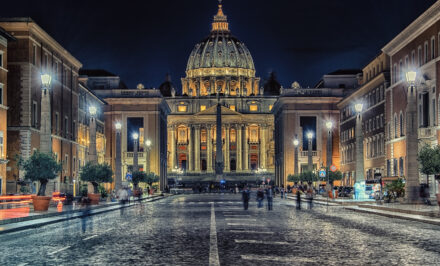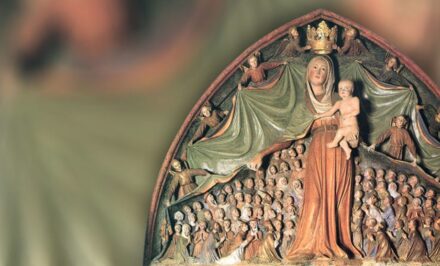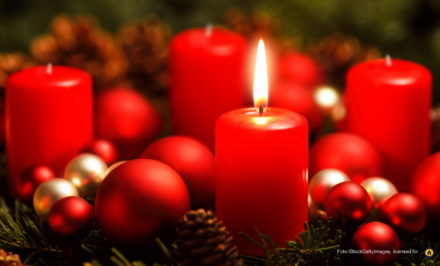 mda. A quiet day this 20 January 2015, “without the thousands of pilgrims from all over the world, without cameras and transmission systems”, as Monsignor Peter Wolf, Rector General of the Schoenstatt Institute of Diocesan Priests, put it during his homily on 20 January in the Church of the Blessed Trinity on Mount Schoenstatt. He invited those present “to look back at the great days of the Jubilee” with the eyes of Fr Kentenich, “and to place them in the light of the Second Milestone”. The Jubilee showed that “the covenant of love is an overwhelming reality” – not as a teaching, but as experience and life.
mda. A quiet day this 20 January 2015, “without the thousands of pilgrims from all over the world, without cameras and transmission systems”, as Monsignor Peter Wolf, Rector General of the Schoenstatt Institute of Diocesan Priests, put it during his homily on 20 January in the Church of the Blessed Trinity on Mount Schoenstatt. He invited those present “to look back at the great days of the Jubilee” with the eyes of Fr Kentenich, “and to place them in the light of the Second Milestone”. The Jubilee showed that “the covenant of love is an overwhelming reality” – not as a teaching, but as experience and life.
What follows is the text of Dr Wolf’s homily on 20 January 2015
Dear Schoenstatt Family, dear sisters and brothers in the faith,
the great Jubilee is behind us and a new year, indeed a new century of Schoenstatt’s history, has started. We allowed ourselves to be set on fire by the youthful enthusiasm of the torch rally runners. We allowed ourselves to be touched by the entry of the MTA into the arena, and were moved when she returned to the Original Shrine. We are full of our meeting with our Holy Father and the great Holy Mass in St Peter’s in Rome. We celebrated a joyful feast and experienced that Schoenstatt is an international family.
Today is the first 20 January for us after the great centenary celebrations. It is rather a quiet day without the thousands of pilgrims from all over the world, without the cameras and the transmission systems. I see today as an invitation from our Father. I imagine that he is taking us aside, as Jesus once did with his disciples after the onslaught of so many people, after a time filled with preaching and miracles during his public life.
He wants to invite us on this memorable 20 January to look back on the great days of the Jubilee with his eyes, and consciously place them in the light of the Second Milestone. The milestones of our history are not just, as the words might suggest, unalterable markers along the way; they are the concentration of life processes, and for the times ahead they are sources of life and inspiration. The stones are – to modify an image used by our Father about Peter, the Rock – pilgrim stones that have not only marked Schoenstatt’s way in the past, but continue on pilgrimage with us, in order to show us the way, in much the same way as the pillar of fire and the cloud led the exodus out of Egypt. So they are present at each stage of our history. In the light of faith in Divine Providence we may re-discover them and re-assimilate them, so that they can shine out again in a new way and begin to have an effect. For our Father and Founder, the 20 January and the Second Milestone were the breakthrough of total reliance on the reality of the supernatural world, and the solidarity and interweaving of destinies of the members of the Family with one another and with the Founder. He saw it as the axis of our family history, and expected that the future history of Schoenstatt would always revolve around this axis.
1. Relying on the reality of the supernatural world
Without doubt the central experience of our Jubilee was the tangible presence of the Blessed Mother in the shrine. A noticeable movement of emotion passed through the ranks of those present when the MTA picture was carried into the arena on many shoulders, and was then accompanied by many on the way back to the Original Shrine. It was nothing less than a holy moment that touched hearts – even over oceans and continents via TV and the internet. The covenant of love is an overwhelming reality. It is not just a statement in our Schoenstatt catechism, but an experience that became concentrated during the Jubilee.
The covenant of love celebration was for many the actual climax of the Jubilee and will probably be the abiding milestone on our pathway into the future. This experience reflects our Father’s statement on 20 January 1942 that his actions were only understandable because of “the reality of the supernatural world”. This is what be relied on from the beginning, and it became evident to him in the step he took on 20 January 1942. He challenges all of us as his Family to rely on the reality of this covenant of love. The covenant of love has to remain our centre, “our Ceterum censeo”, as our Father liked to call it. We build on this supernatural reality with our Founder in all our plans and undertakings in the future; from this centre we are given invincible strength and hope.
2. The interweaving of destinies with one another in the Family
Many who joined in celebrating the Jubilee mentioned the experience of the international and family-like community of young and old as one of the most joyful of these days. All were attracted and inspired by the same centre, all experienced that they were living in the same grace. Countless people participated actively and filled the large jars of the capital of grace. This was expressed in the large jars, not just outwardly, but as a tangible reality. Young men and women gave many months of their lives to the Blessed Mother in her shrine. Think of how many freely carried out so many hidden services, and contributed their holidays and money to do so. Think of how many worked to the very limits of their possibilities in the preparations – and some even beyond that. Others contributed their inability to be there. They offered up their illness, and no small number was called to their eternal home in the time around the Jubilee. Heaven manifested its glory in accepting these contributions and transforming them into a blessing. It did this not just here in Germany and Europe, but as though via a mysterious network, as though via communicating conduits, throughout the world in an exchange of grace and total self-surrender to the Blessed Mother.
All this is connected with what our Father mentioned as a second key word on 20 January 1942: “the interweaving of the destinies of the members of the Family”. Schoenstatt is an organism, far more than an outward organisation: “We are closely united in Christ Jesus” (Heavenwards); love for the Family urges us be responsible for one another and in this way to live the new image of the community about which our Father spoke after his return from exile in Milwaukee. It is an image of a renewed Church united in solidarity. Without great sacrifice, without ardent love that cuts into our own flesh, neither Schoenstatt nor the Church can grow.
Will we accompany him along this path of total self-surrender? At that time the Inscriptio was the condition for the release of our Father from prison and the concentration camp; today this lived solidarity and readiness for sacrifice is the condition for the breakthrough of Schoenstatt’s charism into the Church. In this context allow me to mention the Matri Ecclesiae Shrine and the Belmonte Centre in Rome. Our Father asked for them and the Family gave it to him on his 80th birthday. It can only be completed in the spirit of this solidarity and as a sign of this breakthrough into the Church. It can only succeed if we trust in the 20 January.
3. Coordination and identification with our Father
The Jubilee was an extraordinary experience of being a family. We experienced that the MTA is a real mother, that we are brothers and sisters from all over the world, and that our Father is really present. Schoenstatt came into existence from his heart. The books by Sr Doria about Schoenstatt’s early history, and the Father texts in the volumes for the Triennium and the covenant of love, help us to intuit how much Fr Kentenich was and is the chosen instrument of Divine Providence in order to give the covenant of love to the world. He is not on the sidelines, he is not just one of the ingredients; between him and the MTA the words “Nothing without you – nothing without me” apply in a unique way, they [our MTA and Fr Kentenich] form an inseparable two-in-oneness. Schoenstatt is the extended heart of our Father, of whom the Blessed Mother took possession already in his childhood.
During the Jubilee the Father Symbol was carried into the Original Shrine together with the MTA picture. It is a permanent pointer to the heavenly Father towards whom everything converges. It is a sign of the completion of the covenant of love in God the Father. Whoever now prays in the Original Shrine will always have the whole world, the whole cosmos of the covenant of love, before their eyes. Our gaze passes from the picture of our Mother to the Cross and tabernacle, and up to the symbol of the Holy Spirit and God the Father. The Blessed Mother has led us to God the Father, and opened up to us the wonderful world of our childhood before God, which is the heart and centre of the Gospel: Father, may your kingdom come!
The instrument for this path and this grace was and is our Father and Founder. During the pilgrimage of the Father Symbol, which lasted a number of years, countless Schoenstatters all over the world have understood and welcomed this symbol as a visit from our Father. With great gratitude they recalled and entered into his guidance to God the Father. He asks us today whether we are prepared to declare our solidarity with him and his guidance in attitude and deed. He often called it “co-ordination and identification with” him as the Founder. In our covenant with our Father our path leads into the future, the axis of which is the 20 January 1942. This day should set us free to share in his mission. It sheds new light on Fr Kentenich as the Father of our Family and its uniting centre. Amen.
Original: German – Translation: M. Cole, UK













